
Change the look of bars, wedges and more in Keynote on Mac
A data series is a set of related values in a graph — for example, all the bars of the same colour in a bar graph, or a single line in a line graph.
You can emphasise trends in your graph by changing the appearance, position or spacing of one or more of the data series.
Change colours and shadows in graph elements
You can change the look of a graph by adding colours, textures, shadows and more. You can change the look of the entire graph, or change individual data series in a graph to differentiate them from other series. For bar graphs, for example, you can fill the bars in each series with a different colour or a colour gradient, apply a different outline (stroke) style and more. For scatter plots, you can change the symbol that represents each point and add connection lines between the points.
Note: You can’t change the look of a single data point in a series (a single bar in a bar chart, for example). All changes you make apply to every data point in the series.
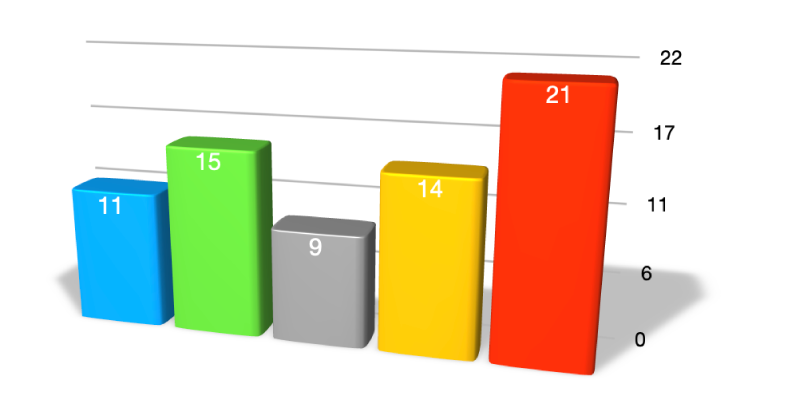
Click the graph.
In the Format
 sidebar, click the Chart tab, then do one of the following:
sidebar, click the Chart tab, then do one of the following:Apply a coordinated colour palette to all the data series in the chart: Click a thumbnail at the top of the Graph tab. All the colours in the chart change at once.
Apply colours, images or textures to all the data series in the graph: Click
 , click Colours, Images or Textures, then click a set of colours to apply it. To preview the colours in your graph, hold the pointer over a colour combination.
, click Colours, Images or Textures, then click a set of colours to apply it. To preview the colours in your graph, hold the pointer over a colour combination.
To change the look of one data series, click one element in a data series (for example, one bar or column, pie wedge or scatter point), then in the Format
 sidebar, click the Style tab. Use the controls in the sidebar to make changes.
sidebar, click the Style tab. Use the controls in the sidebar to make changes.The changes affect only the selected element or data series. To change another series, click one of its elements, then make changes.
To select multiple series, click a series element, then Command-click an element in another series. To select all series, click a series element, then press Command-A.
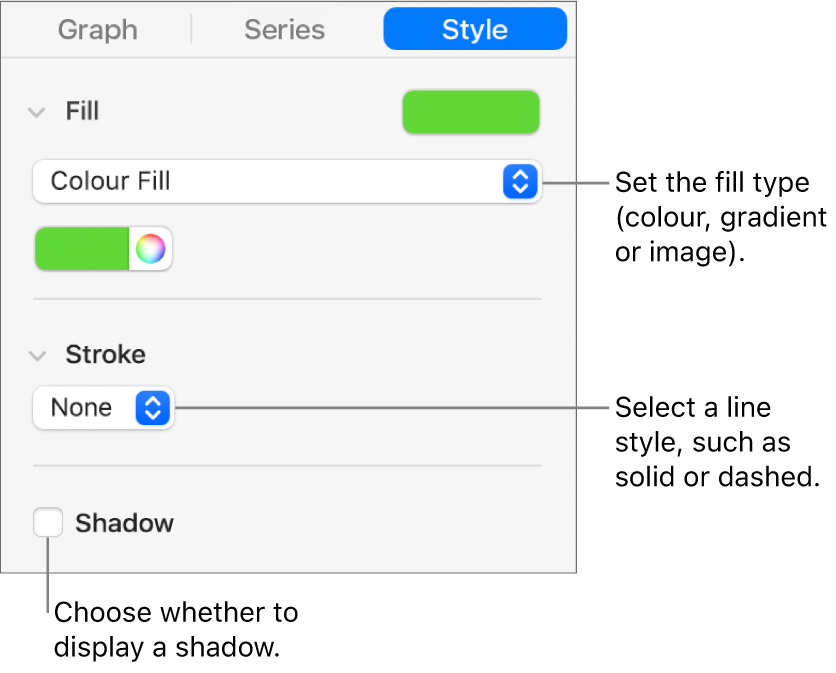
Change the spacing in bar or column graphs
You can set the amount of space between the columns or bars in a column, stacked column, bar or stacked bar chart.
Click the graph, then in the Format
 sidebar, click the Graph tab.
sidebar, click the Graph tab.Click the disclosure arrow next to Gaps, then set the amount of space.
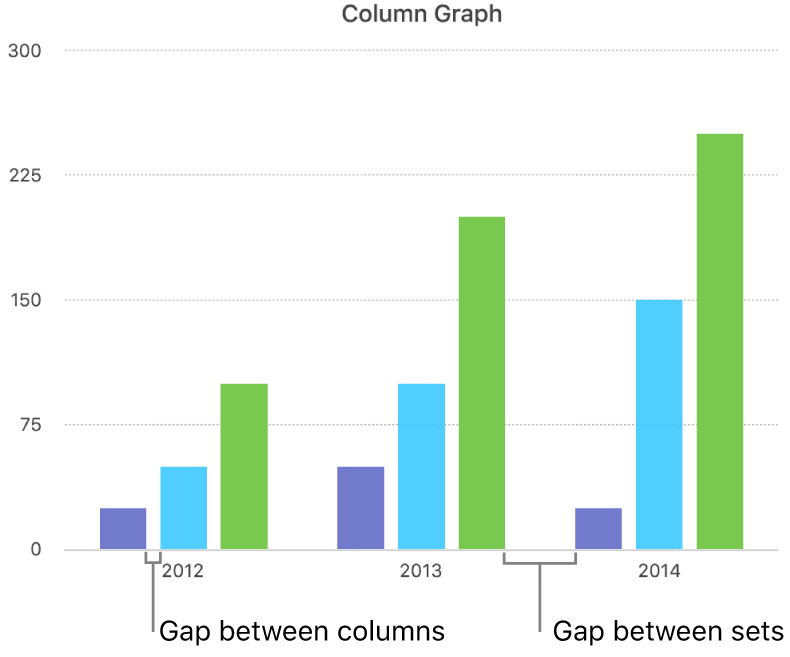
Add rounded corners to bar, column, mixed and two-axis graphs
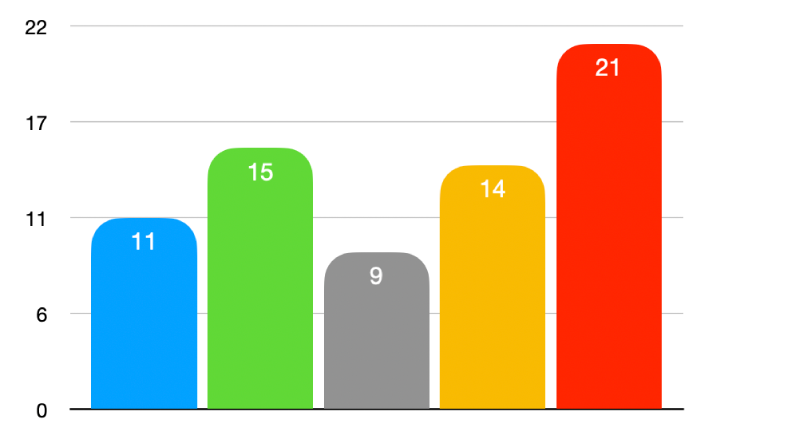
Click the graph to select it.
In the Format
 sidebar, click Graph.
sidebar, click Graph.Click the disclosure arrow next to Rounded Corners, then drag the slider or type a specific value.
To round only the two outside corners of each bar or column (those furthest from the axis), select the Outside Corners Only tick box.
Change the depth of a 3D graph and the shape of series elements
You can change the graph depth, lighting style, bar shape, bevels and rotation of 3D graphs.
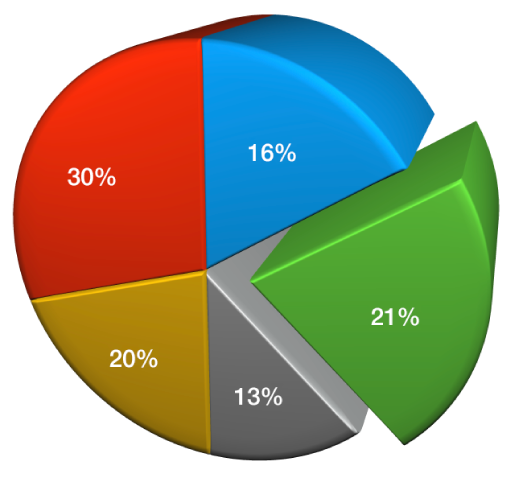
Click the 3D graph to select it.
In the Format
 sidebar, click the Graph tab.
sidebar, click the Graph tab.Click the disclosure arrow next to 3D Scene, then use the controls to make adjustments.
Bevel the edges between series or wedges in 3D stacked and pie charts
You can increase the distinction between series in 3D stacked bar or column graphs and 3D pie charts by bevelling the edges where the series meet.
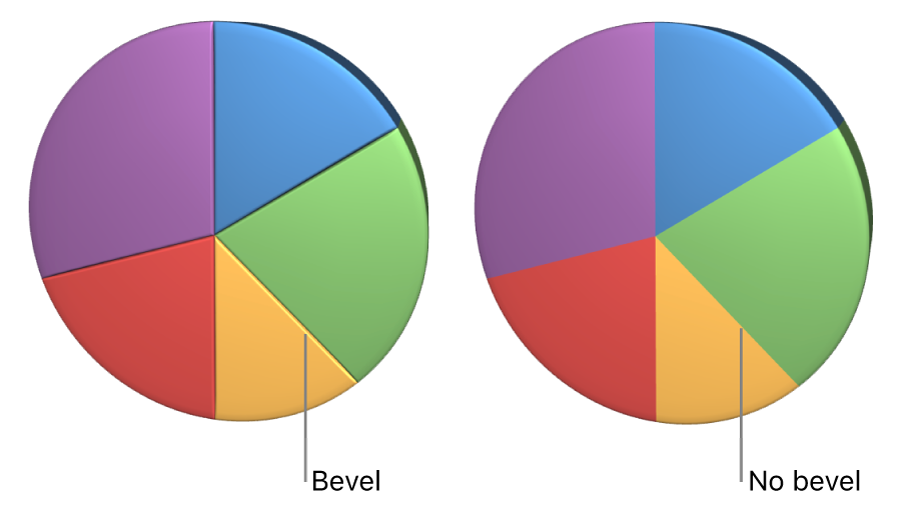
Click the graph.
In the Format
 sidebar, click the Graph tab.
sidebar, click the Graph tab.Click the disclosure arrow next to 3D Scene, then select the Show Bevels tick box.
Change the position of pie chart wedges and doughnut chart segments
Select the pie or doughnut chart.
Do one of the following:
Move only certain wedges or segments: Double click the wedge or segment or Command-click multiple items, then drag.
Move all wedges in a pie chart: In the Format
 sidebar, click the Wedges tab. Click the disclosure arrow next to Wedge Position, then drag the Distance from Centre slider to separate the wedges.
sidebar, click the Wedges tab. Click the disclosure arrow next to Wedge Position, then drag the Distance from Centre slider to separate the wedges.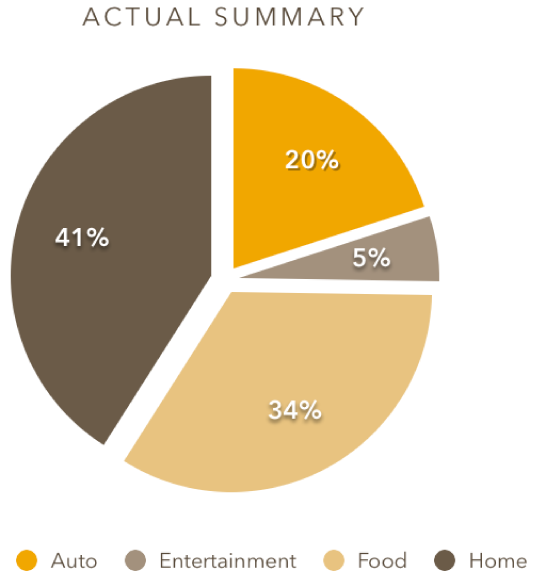
You can also move the Rotation Angle control to change the orientation of pie wedges or doughnut segments. See Move, resize and rotate a graph.
Resize the centre hole of a doughnut chart
Click the doughnut chart to select it.
In the Format
 sidebar, click the Segments tab.
sidebar, click the Segments tab.In the Inner Radius section of the sidebar, drag the slider or type a specific value.
Add or change data symbols in line, scatter and radar charts
You can change the symbols used to represent data in line, scatter and radar charts.
Click the graph to select it.
In the Format
 sidebar, click the Series tab.
sidebar, click the Series tab.Click the pop-up menu below Data Symbols and choose a symbol, or choose None to remove symbols from the graph.
You can also adjust the size of the symbols using the Size field, or leave it blank for automatic sizing.
To change the look of data symbols for only one data series, click one element in a data series (for example, one line or scatter point), click the Style tab in the Format
 sidebar, then do any of the following:
sidebar, then do any of the following:Change the shape of data symbols: Click the pop-up menu below Data Symbols and choose a symbol, or choose None to remove symbols for this data series.
Change the colour of data symbols: Click the pop-up menu below Fill and choose an option. Choose Use Series Stroke Colour to revert to presets.
Change the outline of data symbols: Click the pop-up menus below Stroke, and change the style, colour and weight.
Add a line connecting data symbols: Click the pop-up menu next to Connection Line and choose Straight or Curved. Use the pop-up menus below to change the style, colour and weight of the connecting line.
Add a shadow: Select the Shadow tick box to add a shadow and adjust its blur distance, offset, opacity, angle and colour.
Change the grid style of radar charts
You can change the shape of the grid on a radar chart and choose whether the series have a fill or stroke.
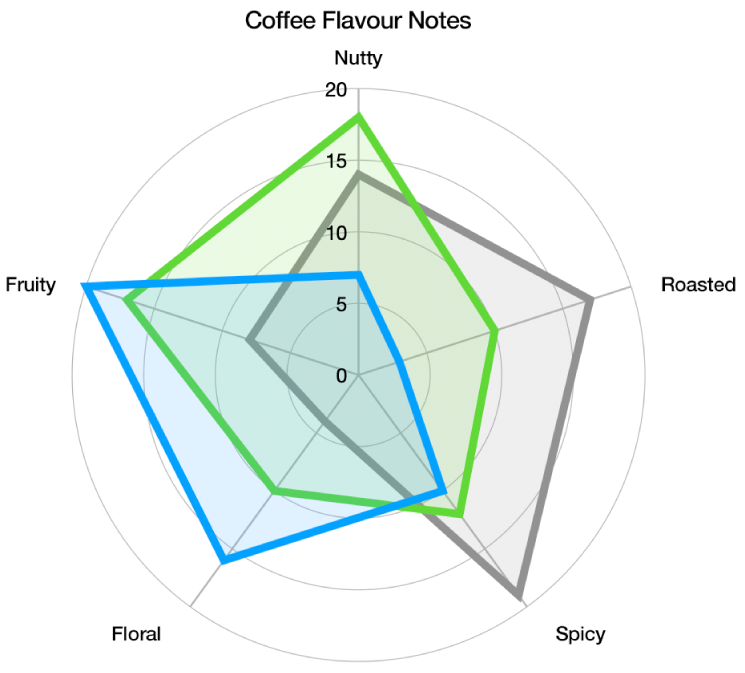
Click the graph to select it.
In the Format
 sidebar, click the Graph tab.
sidebar, click the Graph tab.Below Radar Graph, do any of the following:
Change the grid shape: Use the options next to Grid Shape to choose whether you want the grid to be straight or curved.
Change the fill and stroke: Use the options next to Style to choose whether you want all series to have a colour fill, a stroke along the edge, or both.
You can save a graph’s look as a new style.
If you can’t edit a graph, you may need to unlock it.